- Joined
- Feb 2, 2011
- Messages
- 2,386
NEW RELEASES FOR OCTOBER 2024
THE SECOND WORLD WAR
GERMAN ARMOUR
German Panzerkampfwagen "Panther" Ausf. D (Sd.Kfz.171)
Panther #733 of Panzer-Abteilung 52, Panzer-Regiment "von Lauchert"
Attached to the Grossdeutschland Division
The Battle of Kursk, July 1943
The Panzerkampfwagen "Panther" was arguably the finest tank of World War Two. Its design drew heavily from German combat experience on the Eastern Front against the Russian T-34 and incorporated these lessons on the Panther with thick sloped frontal armor, an excellent long barreled high velocity 7.5cm Kw.K. L/70 cannon, and wide combat tracks that provided excellent maneuverability.
The Panther came to life with very short design and prototype development stages conducted during the summer and fall of 1942. After official acceptance by the Wehmacht at the end of the year, it began serial production in January 1943. Like the iconic Tiger, the Panther was one of the new class of German tanks that would return qualitative superiority to the panzer forces on the East Front. Consequently, Hitler insisted the Panther be ready for Unternehmen Zitadelle (Operation Citadel), the planned German 1943 summer offensive against the Kursk salient that Hitler viewed as crucial to turning the tide of the war against Russia. Hitler felt the Panther was so crucial to the offensive's success, that he even postponed Zitadelle to allow sufficient numbers of Panthers to be produced and delivered to the troops.
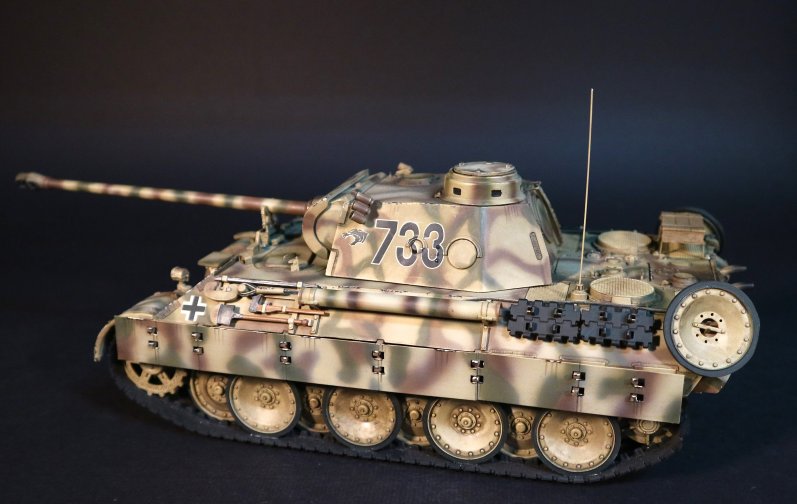
GA-43
THE SECOND WORLD WAR,
GERMAN ARMOUR,
German Panzerkampfwagen "Panther" Ausf. D (Sd.Kfz.171),
Panther #733 of Panzer-Abteilung 52, Panzer-Regiment "von Lauchert" ,
Attached to the Grossdeutschland Division,
The Battle of Kursk, July 1943
The unit specifically created to employ the Panther at Kursk was Panzer-Regiment 39, more commonly known as Panzer-Regiment "von Lauchert", named after its highly regarded combat experienced commander: Knight's Cross winner Major Meinrad von Lauchert. The unit consisted of two full Panther Abteilungs (Battalions): Panzer-Abteilung (Pz.Abt.) 51, formed from elements of Pz.Rgt. 33 from the 9. Pz.Div., and Pz.Abt. 52, formed from elements of Pz.Rgt. 15 from the 11. Pz.Div. (the famed Gespenster/Ghost division). Pz.Rgt. von Lauchert boasted a strength of 200 total Panthers and was placed under the control of the elite Grossdeutschland division for Zitadelle.
The regiment was very hastily assembled, and while it possessed an exceptional commander and a small experienced cadre, the majority of its Panther crews lacked combat experience. The regiment's training was also extremely rushed, with training occurring only at the platoon level; no training at the company, battalion, or regimental level took place prior to Zitadelle. Furthermore, while German industry was able to produce enough Panthers to outfit the unit, these tanks were little more than prototypes themselves, rather than fully tested and vetted production models. Prior to Zitadelle, the Panther factories had already identified eight required upgrades to make the Panther combat ready, but only one of these critical changes was incorporated into the Panthers built and issued to Pz.Rgt. von Lauchert. Lastly, the rush was so great to get Pz.Rgt. von Lauchert to the front, the crews had neither the time to break-in the brand new engines on their tanks nor the opportunity to tune and test the radio systems on their Panthers.
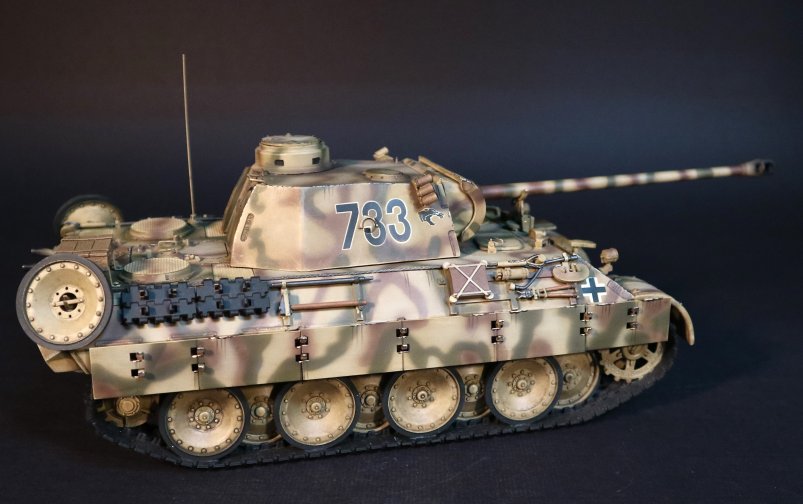
Thus, while Pz.Rgt. von Lauchert appeared to be an extremely powerful armor unit on paper, in reality it was inadequately trained with untested and unreliable tanks. Consequently, like the iconic Tiger before it, the combat debut of the Panther was disastrous. Problems started almost immediately, with two Panthers catching fire and completely burning out while moving to the front lines from the railway station where they arrived. The problems merely escalated from there. Uncharacteristically of an elite division, Grossdeutschland employed the Panthers in unsuitable terrain while disregarding basic panzer tactics. The Panthers were repeatedly ordered to attack without adequate supporting infantry and artillery, in extremely muddy terrain (often directly through mine fields), and on extremely narrow fronts that allowed the bunched up and unsupported Panthers to be outflanked and attacked from the sides, where the Panthers thinner side armor was vulnerable to Russian 76mm tank cannons and anti-tank guns. The Panthers also were mechanically unreliable and broke down at an astronomical rate, due mainly to faulty fuel pumps and untested engines that were over-revved in combat. By the sixth day of the offensive, only 10 of the original 200 Panthers were operational for combat.
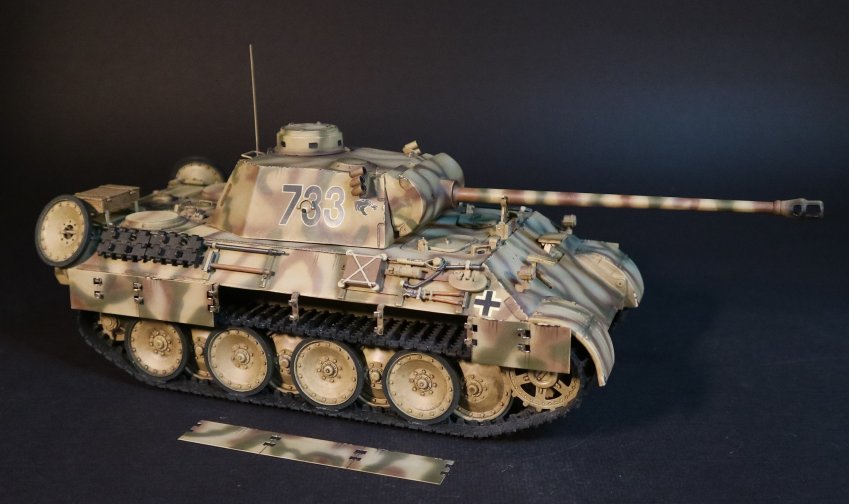
Consequently, history will forever view the combat debut of the Panther as an unmitigated disaster, with some critics alleging the Panther Ausf D was essentially "worthless". However, the reality was different. Major von Lauchert vehemently protested the "idiotic" manner in which his regiment was initially employed, and after the first few disastrous days, his advice began to be heeded. Subsequent attacks saw the Panthers employed with adequate infantry/artillery support and on broad fronts that prevented the Russians from outflanking the Panthers. In these later attacks, the Panther proved its worth, knocking out hundreds of Russian tanks during the Kursk offensive. General Heinz Guderian, Generalinspekteur Der Panzertruppen (General Inspector of Panzer Troops), visited the battlefield during the Kursk offensive and wrote a detailed analysis of the Panther following the battle. Notable observations were as follows:
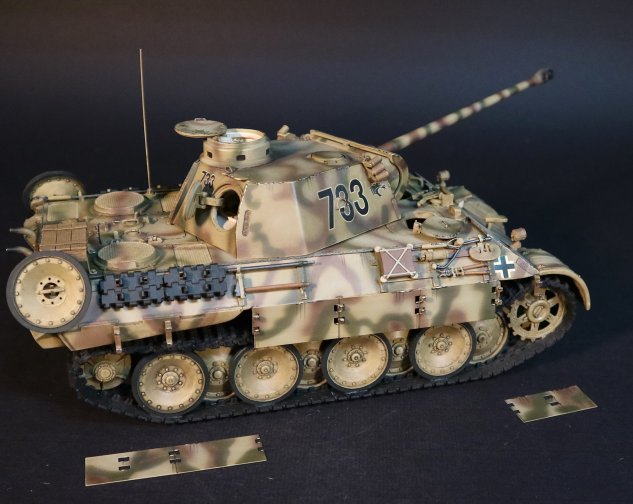
- The Panther's main gun was exceptionally lethal. Almost all of its kills against against the T-34 occurred at ranges from 1500-2000 meters, with multiple T-34 and KV-1 heavy tanks being killed at 3000 meters.
- The Panthers 80mm frontal armor sloped at 55 degrees provided the equivalent of 139mm of armor protection (which was more protection than the Tiger's 100mm front armor). Not one single Panther's frontal armor was penetrated.
- The Panther is basically invulnerable to artillery fire. Only direct hits on the hull and turret roof by 150mm caused damage. Hits with lighter caliber shells caused no effect.
- The high number of mechanical breakdowns should have been expected since lengthy troop trials did not occur. After deficiencies in the fuel pumps/fuel lines and motors are corrected, operational limits should be in normal ranges.
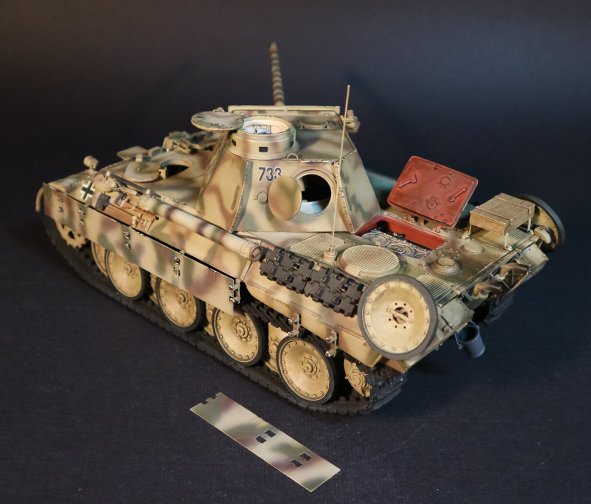
General Guderian's buttssment was very accurate. The Panther's initial "teething problems" and disappointing combat debut were due to its rush into combat, and not with inherent weaknesses of the Panther itself. These problems would be solved, and subsequent combat over the remainder of the war would cement the Panther's fearsome legacy as arguably the finest tank of World War Two.
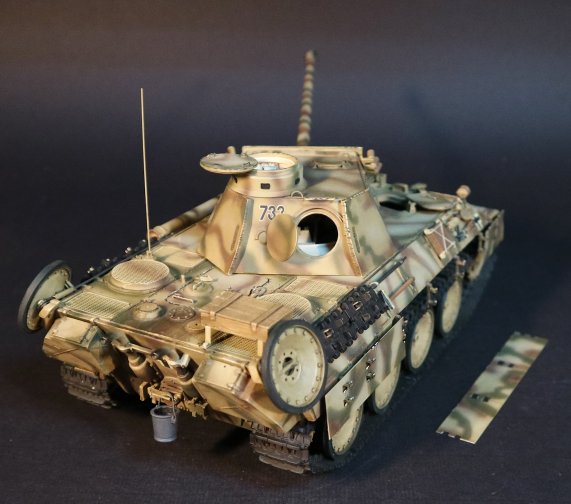
The JJD Panther #733 represents one of the first production Panthers issued to the 7. Kompanie of Panzer-Abteilung 52, whose insignia was a black roaring Panther head painted on the turret sides. It also includes all of the early Ausf D features such as the commander's "drum" cupola, a binocular gunsight in the mantlet, `smoke grenades on the turret sides, and "letterbox" machinegun flap in the front hull. Additionally, two spare road wheels are provided as accessories to be carried on the Panther's rear hull. The early 16-bolt wheels of the Panther were weak, and early tank crews often carried spare wheel's to replace broken ones.
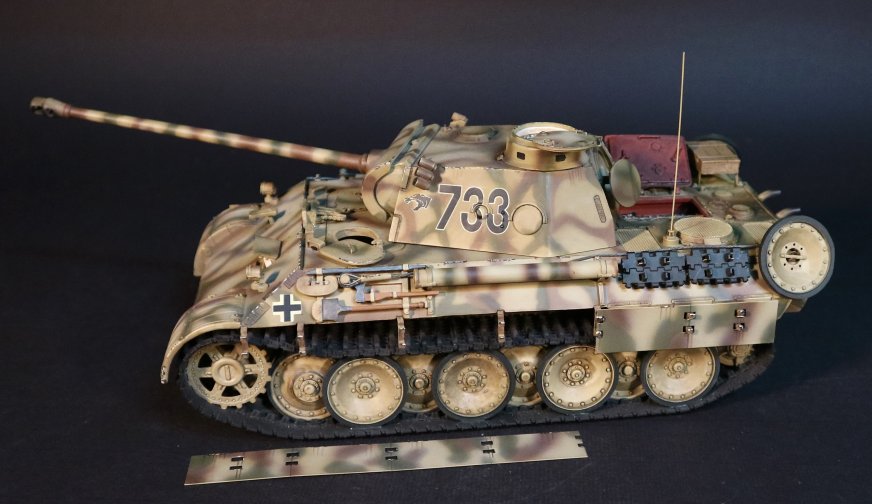
The JJ Designs Panther Ausf D also comes with the following standard features:
- all turret hatches open, including the rear turret escape hatch
- fully detailed turret and hull interior
- opening engine hatch with detailed engine
- removable schürzen side armor panels

Once again, a big thank you to, Steve “The Foreign Expert” (Hunter Rose)
USAAF GROUNDCREW AND PILOTS
Ground crews were responsible for keeping the aircraft of WWII in safe flying condition. Ground crew members made repairs to aircraft, as well as handling routine maintenance. As soon as a plane lands, the ground crew went to work - checking landing gear, refilling fuel tanks, examining the wings, and making any necessary repairs. Aside from regular AAF soldier schooling, ground crews were also highly trained in mathematics, mechanics, and machine shop skills. The ground crew's job was truly to "keep 'em flying."
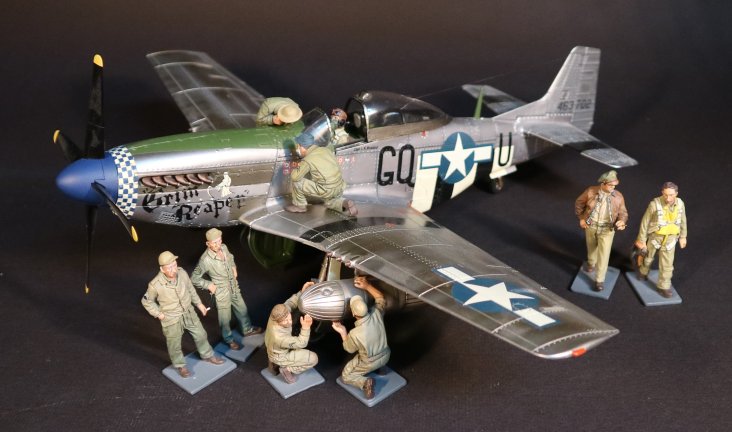
Ground Crews tirelessly maintained and repaired battle damage, and made modifications to enhance aircraft effectiveness. Their work was crucial to keeping planes operational.
The USAAF were to train hundreds of thousands of flying and ground personnel during WW2
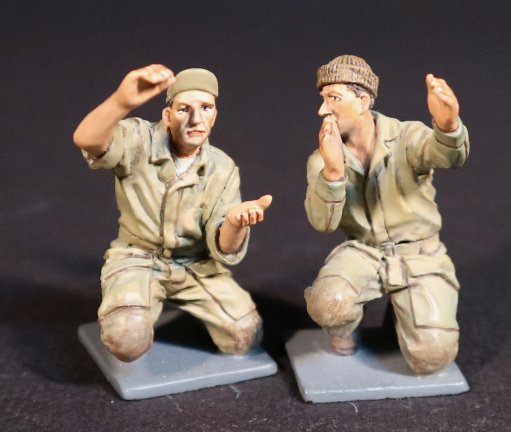
USAAF-04
THE SECOND WORLD WAR,
USAAF GROUNDCREW AND PILOTS,
GROUNDCREW
The USAAF-01 model is of a P-51D named the “Grim Reaper.” It was piloted by fighter ace Capt. Lowell Brueland.
Brueland had deployed to England in November 1943 and was assigned to the 355th Fighter Squadron, 354th Fighter Group, Ninth Army Air Force.
From 1943 to 1945, Brueland was credited with the destruction of 12.5 enemy aircraft in aerial combat. He eventually became commander of the 355th Fighter Squadron in May 1945,
Capt. Brueland was awarded the Distinguished Service Cross for gallantry in action on November 8, 1944. During a fighter sweep over the St. Lo area in Normandy, France in July 1944, Brueland and his formation of eight P-51 fighters engaged over 60 German fighters and fighter bombers. In the ensuing combat, Brueland shot down three enemy fighters and damaged a fourth. Brueland and his fighter group eventually caused enemy fighters to disperse and be driven off. In addition, German fighter bombers were forced to jettison their bombs, thus eliminating a threat to the Allied front.
Brueland later served in command roles during both the Korean War and Vietnam conflict. He retired from the Air Force on December 31, 1968. He died on July 2, 2012, and was later buried at Arlington National cemetery
The P-51 Mustang fighter was manufactured in the United States during World War II (WWII). The first Mustang to come off assembly lines in California and Texas were P-51As. The P-51 was first used by the British Royal Air Force in 1942.
Starting in late 1943, the P-51B version was used by the U.S. Army Eight Air Force. Later in mid-1944, the P-51D version was introduced into the European theater. The P-51D was the most widely produced version of the Mustang during WWII and was easily recognized by its bubble top canopy and Rolls Royce Merlin engine.
The P-51D was equipped with six .50 caliber Browning machine guns holding a total compliment of 1880 rounds. The fighter also carried “zero rail” rockets under each wing and were equipped with bomb racks capable of carrying up to 1000 pounds of bombs. Because of its excellent range and maneuverability, the P-51 was primarily used as a long-range escort and as a ground attack fighter-bomber.
The Mustang was the first single engine fighter in Britain with enough fuel range to escort bombers to Germany and back. Luftwaffe Reichsmarshall Hermann Goring was quoted as saying after seeing the Mustang over Germany that “the war is lost.”
In both the European and Pacific theaters, Mustang pilots shot down a total of 4,950 enemy aircraft, and 275 P-51 pilots achieved “Ace” status.
**PLEASE CONTACT YOUR LOCAL DEALER FOR FURTHER INFORMATION**
THE SECOND WORLD WAR
GERMAN ARMOUR
German Panzerkampfwagen "Panther" Ausf. D (Sd.Kfz.171)
Panther #733 of Panzer-Abteilung 52, Panzer-Regiment "von Lauchert"
Attached to the Grossdeutschland Division
The Battle of Kursk, July 1943
The Panzerkampfwagen "Panther" was arguably the finest tank of World War Two. Its design drew heavily from German combat experience on the Eastern Front against the Russian T-34 and incorporated these lessons on the Panther with thick sloped frontal armor, an excellent long barreled high velocity 7.5cm Kw.K. L/70 cannon, and wide combat tracks that provided excellent maneuverability.
The Panther came to life with very short design and prototype development stages conducted during the summer and fall of 1942. After official acceptance by the Wehmacht at the end of the year, it began serial production in January 1943. Like the iconic Tiger, the Panther was one of the new class of German tanks that would return qualitative superiority to the panzer forces on the East Front. Consequently, Hitler insisted the Panther be ready for Unternehmen Zitadelle (Operation Citadel), the planned German 1943 summer offensive against the Kursk salient that Hitler viewed as crucial to turning the tide of the war against Russia. Hitler felt the Panther was so crucial to the offensive's success, that he even postponed Zitadelle to allow sufficient numbers of Panthers to be produced and delivered to the troops.

GA-43
THE SECOND WORLD WAR,
GERMAN ARMOUR,
German Panzerkampfwagen "Panther" Ausf. D (Sd.Kfz.171),
Panther #733 of Panzer-Abteilung 52, Panzer-Regiment "von Lauchert" ,
Attached to the Grossdeutschland Division,
The Battle of Kursk, July 1943
The unit specifically created to employ the Panther at Kursk was Panzer-Regiment 39, more commonly known as Panzer-Regiment "von Lauchert", named after its highly regarded combat experienced commander: Knight's Cross winner Major Meinrad von Lauchert. The unit consisted of two full Panther Abteilungs (Battalions): Panzer-Abteilung (Pz.Abt.) 51, formed from elements of Pz.Rgt. 33 from the 9. Pz.Div., and Pz.Abt. 52, formed from elements of Pz.Rgt. 15 from the 11. Pz.Div. (the famed Gespenster/Ghost division). Pz.Rgt. von Lauchert boasted a strength of 200 total Panthers and was placed under the control of the elite Grossdeutschland division for Zitadelle.
The regiment was very hastily assembled, and while it possessed an exceptional commander and a small experienced cadre, the majority of its Panther crews lacked combat experience. The regiment's training was also extremely rushed, with training occurring only at the platoon level; no training at the company, battalion, or regimental level took place prior to Zitadelle. Furthermore, while German industry was able to produce enough Panthers to outfit the unit, these tanks were little more than prototypes themselves, rather than fully tested and vetted production models. Prior to Zitadelle, the Panther factories had already identified eight required upgrades to make the Panther combat ready, but only one of these critical changes was incorporated into the Panthers built and issued to Pz.Rgt. von Lauchert. Lastly, the rush was so great to get Pz.Rgt. von Lauchert to the front, the crews had neither the time to break-in the brand new engines on their tanks nor the opportunity to tune and test the radio systems on their Panthers.

Thus, while Pz.Rgt. von Lauchert appeared to be an extremely powerful armor unit on paper, in reality it was inadequately trained with untested and unreliable tanks. Consequently, like the iconic Tiger before it, the combat debut of the Panther was disastrous. Problems started almost immediately, with two Panthers catching fire and completely burning out while moving to the front lines from the railway station where they arrived. The problems merely escalated from there. Uncharacteristically of an elite division, Grossdeutschland employed the Panthers in unsuitable terrain while disregarding basic panzer tactics. The Panthers were repeatedly ordered to attack without adequate supporting infantry and artillery, in extremely muddy terrain (often directly through mine fields), and on extremely narrow fronts that allowed the bunched up and unsupported Panthers to be outflanked and attacked from the sides, where the Panthers thinner side armor was vulnerable to Russian 76mm tank cannons and anti-tank guns. The Panthers also were mechanically unreliable and broke down at an astronomical rate, due mainly to faulty fuel pumps and untested engines that were over-revved in combat. By the sixth day of the offensive, only 10 of the original 200 Panthers were operational for combat.

Consequently, history will forever view the combat debut of the Panther as an unmitigated disaster, with some critics alleging the Panther Ausf D was essentially "worthless". However, the reality was different. Major von Lauchert vehemently protested the "idiotic" manner in which his regiment was initially employed, and after the first few disastrous days, his advice began to be heeded. Subsequent attacks saw the Panthers employed with adequate infantry/artillery support and on broad fronts that prevented the Russians from outflanking the Panthers. In these later attacks, the Panther proved its worth, knocking out hundreds of Russian tanks during the Kursk offensive. General Heinz Guderian, Generalinspekteur Der Panzertruppen (General Inspector of Panzer Troops), visited the battlefield during the Kursk offensive and wrote a detailed analysis of the Panther following the battle. Notable observations were as follows:

- The Panther's main gun was exceptionally lethal. Almost all of its kills against against the T-34 occurred at ranges from 1500-2000 meters, with multiple T-34 and KV-1 heavy tanks being killed at 3000 meters.
- The Panthers 80mm frontal armor sloped at 55 degrees provided the equivalent of 139mm of armor protection (which was more protection than the Tiger's 100mm front armor). Not one single Panther's frontal armor was penetrated.
- The Panther is basically invulnerable to artillery fire. Only direct hits on the hull and turret roof by 150mm caused damage. Hits with lighter caliber shells caused no effect.
- The high number of mechanical breakdowns should have been expected since lengthy troop trials did not occur. After deficiencies in the fuel pumps/fuel lines and motors are corrected, operational limits should be in normal ranges.

General Guderian's buttssment was very accurate. The Panther's initial "teething problems" and disappointing combat debut were due to its rush into combat, and not with inherent weaknesses of the Panther itself. These problems would be solved, and subsequent combat over the remainder of the war would cement the Panther's fearsome legacy as arguably the finest tank of World War Two.

The JJD Panther #733 represents one of the first production Panthers issued to the 7. Kompanie of Panzer-Abteilung 52, whose insignia was a black roaring Panther head painted on the turret sides. It also includes all of the early Ausf D features such as the commander's "drum" cupola, a binocular gunsight in the mantlet, `smoke grenades on the turret sides, and "letterbox" machinegun flap in the front hull. Additionally, two spare road wheels are provided as accessories to be carried on the Panther's rear hull. The early 16-bolt wheels of the Panther were weak, and early tank crews often carried spare wheel's to replace broken ones.

The JJ Designs Panther Ausf D also comes with the following standard features:
- all turret hatches open, including the rear turret escape hatch
- fully detailed turret and hull interior
- opening engine hatch with detailed engine
- removable schürzen side armor panels

Once again, a big thank you to, Steve “The Foreign Expert” (Hunter Rose)
USAAF GROUNDCREW AND PILOTS
Ground crews were responsible for keeping the aircraft of WWII in safe flying condition. Ground crew members made repairs to aircraft, as well as handling routine maintenance. As soon as a plane lands, the ground crew went to work - checking landing gear, refilling fuel tanks, examining the wings, and making any necessary repairs. Aside from regular AAF soldier schooling, ground crews were also highly trained in mathematics, mechanics, and machine shop skills. The ground crew's job was truly to "keep 'em flying."

Ground Crews tirelessly maintained and repaired battle damage, and made modifications to enhance aircraft effectiveness. Their work was crucial to keeping planes operational.
The USAAF were to train hundreds of thousands of flying and ground personnel during WW2

USAAF-04
THE SECOND WORLD WAR,
USAAF GROUNDCREW AND PILOTS,
GROUNDCREW
The USAAF-01 model is of a P-51D named the “Grim Reaper.” It was piloted by fighter ace Capt. Lowell Brueland.
Brueland had deployed to England in November 1943 and was assigned to the 355th Fighter Squadron, 354th Fighter Group, Ninth Army Air Force.
From 1943 to 1945, Brueland was credited with the destruction of 12.5 enemy aircraft in aerial combat. He eventually became commander of the 355th Fighter Squadron in May 1945,
Capt. Brueland was awarded the Distinguished Service Cross for gallantry in action on November 8, 1944. During a fighter sweep over the St. Lo area in Normandy, France in July 1944, Brueland and his formation of eight P-51 fighters engaged over 60 German fighters and fighter bombers. In the ensuing combat, Brueland shot down three enemy fighters and damaged a fourth. Brueland and his fighter group eventually caused enemy fighters to disperse and be driven off. In addition, German fighter bombers were forced to jettison their bombs, thus eliminating a threat to the Allied front.
Brueland later served in command roles during both the Korean War and Vietnam conflict. He retired from the Air Force on December 31, 1968. He died on July 2, 2012, and was later buried at Arlington National cemetery
The P-51 Mustang fighter was manufactured in the United States during World War II (WWII). The first Mustang to come off assembly lines in California and Texas were P-51As. The P-51 was first used by the British Royal Air Force in 1942.
Starting in late 1943, the P-51B version was used by the U.S. Army Eight Air Force. Later in mid-1944, the P-51D version was introduced into the European theater. The P-51D was the most widely produced version of the Mustang during WWII and was easily recognized by its bubble top canopy and Rolls Royce Merlin engine.
The P-51D was equipped with six .50 caliber Browning machine guns holding a total compliment of 1880 rounds. The fighter also carried “zero rail” rockets under each wing and were equipped with bomb racks capable of carrying up to 1000 pounds of bombs. Because of its excellent range and maneuverability, the P-51 was primarily used as a long-range escort and as a ground attack fighter-bomber.
The Mustang was the first single engine fighter in Britain with enough fuel range to escort bombers to Germany and back. Luftwaffe Reichsmarshall Hermann Goring was quoted as saying after seeing the Mustang over Germany that “the war is lost.”
In both the European and Pacific theaters, Mustang pilots shot down a total of 4,950 enemy aircraft, and 275 P-51 pilots achieved “Ace” status.
**PLEASE CONTACT YOUR LOCAL DEALER FOR FURTHER INFORMATION**

